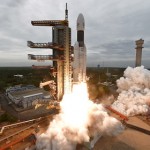By 2030, the global space industry could add almost 50,000 new commercial satellites to the existing approximately 5000. These include earth-observation satellites selling commercial imagery, telecommunication satellites providing 5G and next-in-line 6G data services, and meteorological satellites selling weather-forecasts and datasets. These satellite-based services will come in the form of satellite constellations operating in a choreographed manner. The services could swiftly add several billion dollars TO the incipient convergence of global digital and space economies.
The increasing dependence of the digital economy on satellite constellations is spurring investment into this area. But investors must beware: this is not risk-free. The most apparent threat is the celestial equivalent of traffic jams and accidents: collisions between a dense network of satellites plying the orbital highways, resulting in massive free-floating space debris. A 2020 OECD report estimates that protecting satellites from space debris could add 5%-10% more per space mission. So, commercial companies which provide a prognosis via ground-based debris tracking and situational awareness systems, and those using co-orbiting robots that can sweep and collect space debris, have emerged.
A perennial threat to satellite constellations is that of extreme space weather events, and this cannot be addressed by the satellite or digital economy players alone. It demands the full attention of governments.
In October 2020, the U.S. Congress passed a landmark legislation known as the PROSWIFT (Promoting Research and Observations of Space Weather to Improve the Forecasting of Tomorrow) Act. The act directs civilian and military agencies to reinforce national space weather forecasting abilities. These agencies include the White House’s Office of Science and Technology Policy, National Aeronautics and Space Administration (NASA), National Oceanic and Atmospheric Administration (NOAA), the U.S. Geological Survey (USGS), National Science Foundation (NSF), and the U.S. Air Force and Navy. The coalescing of these agencies indicates the complexity of the challenge that now warrants a whole-of-government approach from the U.S. Congress to space weather monitoring.
All these play a significant role. The U.S. Air Force and Navy, because the U.S. is an expeditionary military power with armed force bases spread across the world. It maintains continuous connectivity with these bases. The Pentagon demands unhindered communications with its reconnaissance aircrafts, naval carrier groups, submarines, fighter jets, helicopters, surveillance and attack drones among many other mobile platforms. Such connectivity is dependent mainly on satellites, and space weather-caused glitches could threaten these expensive and strategic expeditionary assets and compromise operations. Therefore, for long, the Pentagon has been the largest benefactor to American space weather monitoring activities.
The USGS too monitors space weather events which impact civilian operations, like high-power transmissions on the ground, navigation systems used on land and space, oil and gas pipelines, and diverse utility infrastructure. NOAA and NASA monitor the sun for geomagnetic storms, coronal mass ejections, and other phenomena that emit highly energetic particles and radiations that disturb satellites as well as ground-based infrastructure. Managing the PROSWIFT Act’s implementation and policy facets is the White House’ Office of Science and Technology Policy.
Unlike autocratic nations that assign space weather monitoring to its military through executive orders from the top national office, democratic nations need legislations. For instance, when China restructured its armed forces in 2015, it transferred the Meteorological, Hydrological, and Space Weather Command from the People’s Liberation Army General Staff Department to the People’s Liberation Army Strategic Support Force (PLASSF); the latter being China’s new cyber, space and electronic warfare branch. New Delhi has lessons to learn.
In the coming years, India’s economy will become increasingly dependent on space- and ground-based commercial, civilian and military assets. These will be vulnerable to extreme space weather events. India needs a PROSWIFT-like national legislation with cross-ministerial directions. This will feed into India’s aspiration to have a blue-water navy, operate an indigenous satellite navigation system, secure road, rail, energy, telecom, shipping, aviation infrastructure, respond to natural disasters and ward off national security threats – all of which will depend on a comprehensive national space weather legislation.
India is swiftly progressing with its capital-intensive planetary exploration and human-in-the-loop human spaceflight projects. Consequently, it becomes imperative for the government to develop and adopt space weather forecasts before initiating outer space activities. While our country progresses with the Gaganyaan program and subsequently aspires to raise an Indian space station by 2030, an across-the-board space weather monitoring, forecasting, and response architecture will be an essential precursor to safeguard deep-space assets and protect our gaganauts.
India already has a vibrant scientific community that observes the ‘sun’ and its inherent physical behavior, its solar storms, coronal mass ejections, surface, and ‘helio’-seismological activities. The community operates numerous ground-based ‘sun observing’ telescopes across India and is well connected with its international community. In the coming months, perhaps by the end of 2021, the same community will launch the ADITYA-L1 space-based solar observatory with the assistance of ISRO. The data generated therefrom will be crucial for India’s space weather monitoring ambitions. But without cross-ministerial binding policy and legislation, the scientific community will find it difficult to meet the strategic demands of the conjoined space and digital economies.
A model lies in India’s whole-of-government approach concerning disaster response and humanitarian assistance, evident in the response to natural disasters like earthquakes and preparatory work for cyclones, floods, and tsunamis. A space weather legislation, like the 2005 Disaster Management Act, can help India protect its global digital and telecom arteries, extending to outer space, from destructive solar storms and intense solar and galactic radiation whiplashes.
This article was first published in Mint.
Chaitanya Giri is Fellow, Space and Ocean Studies Programme, Gateway House.


